Accepted Scientific Name: Copiapoa humilis subs. tenuissima (F.Ritter ex D.R.Hunt) D.R.Hunt
Cactaceae Syst. Init. 16: 6 (11 Oct. 2003).
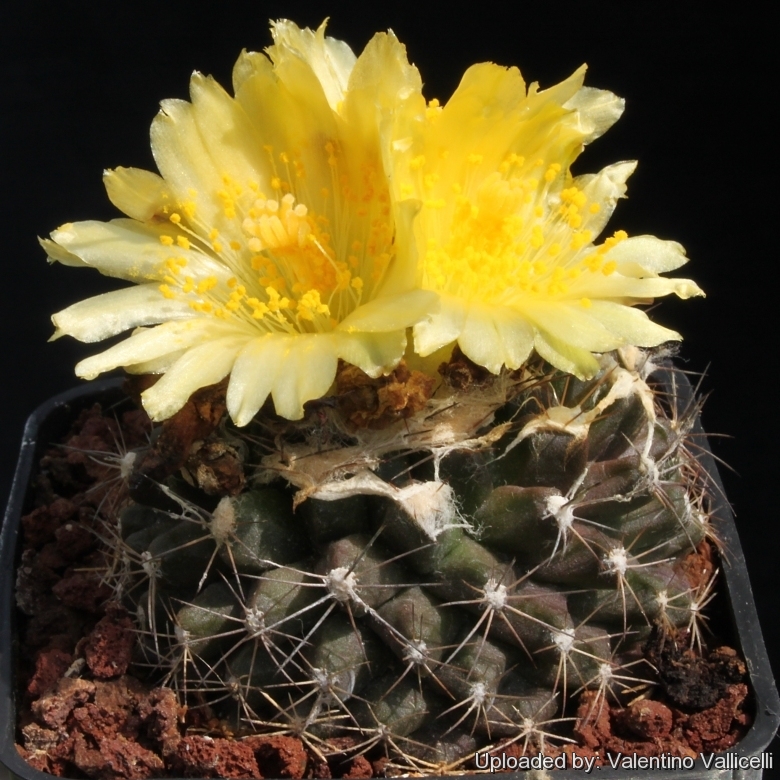
Copiapoa tenuissima (Copiapoa humilis subs. tenuissima) Photo by: Valentino Vallicelli
Origin and Habitat: South of Antofagasta. Northern Chile.
Habitat: Native to the coastal deserts on the steep mountain base among fragmented stones. The long tuberous root of this Copiapoa is buried deeply in these soils which are very poor in organic matter. In the area where this plants grows there is very little rain but frequent coastal fog, which provides a significant part of their water needs. The common presence in habitat of plants with juvenile spination forms on old taproots is due to the frequent grazing damage inflicted by donkeys and Guanacos.
Synonyms:
See all synonyms of Copiapoa humilis
Description: Copiapoa tenuissimaSN|9786]]SN|1138]] is a geophytic cactus arising from a large tuberose root that can slowly branch from the base to form small clumps. It differs from Copiapoa humilisSN|9790]]SN|9790]] for its smaller stems, and its taxonomic status is controversial. It is not clear whether it should be treated as a species or as some lower rank.
Habit: It is a single headed or slowly clumping cactus, usually at or slightly below soil level.
Roots: Large tuberose, connected to the stem by long slender neck. The main root may be several times the length of the above-ground body, and serves for storing water. Seedlings naturally produce the huge tap root, starting from germination, i.e. before the plant stem becomes mature.
Stems: Flattened to spherical, 2-5 cm in diameter, dull-green, dark olive green, to almost purplish-black, outer skin rough with fine warts. The slightly felted apex can be regarded as a persistent juvenile characters, which can be explained by the need for the plant to multiply as early as possible, before they fall victim to the Guanacos.
Ribs: 13-16, developing into tubercles, often spiraling, 3-4 mm tall.
Areoles: White abundantly woolly.
Radial spines: 8-14 very thin (almost hairy), acicular, usually straight 3-6 mm long, yellowish to blackish, falling off later.
Central spines: 0-2 (mostly absent) 4-10 mm long.
Flowers: Pretty, yellow diurnal, only 2-2,5 cm long. Tepals up to 15 mm long 5-7 mm wide. Ovary with pubescent scales, floral tube 4-7 mm long. The flowers are supposedly to be sweet scented. (The hairy ovary and fruit are a link with Ritter's PiloSN'> 9787' alt='1138'>Copiapoa solaris#SN#9786'>Pilo[[Copiapoa solarisSN' style='border:none;'>)
9787' alt='1138'>Copiapoa solaris#SN#9786'>Pilo[[Copiapoa solarisSN' style='border:none;'>)
Blooming season: Spring and summer. In cultivation in the Copipoa tenuissima are able to flower from immature stems at an early age (c. 2 years from germination) and set viable seed.
Fruit: Globose, green to maroon unusual for the genus by being woolly, a primitive characteristic.
Subspecies, varieties, forms and cultivars of plants belonging to the Copiapoa humilis group
Bibliography: Major references and further lectures
1) Edward Anderson “The Cactus family” Timber Press, Incorporated, 2001
2) James Cullen, Sabina G. Knees, H. Suzanne Cubey "The European Garden Flora Flowering Plants: A Manual for the Identification of Plants Cultivated in Europe, Both Out-of-Doors and Under Glass" Cambridge University Press, 11/Aug/2011
3) David R Hunt; Nigel P Taylor; Graham Charles; International Cactaceae Systematics Group. "The New Cactus Lexicon" dh books, 2006
4) N. L. Britton, J. N. Rose “The Cactaceae. Descriptions and Illustrations of Plants of the Cactus Family.” Volume 4, The Carnegie Institution of Washington, Washington 1923
5) Urs Eggli, Leonard E. Newton “Etymological Dictionary of Succulent Plant Names” Birkhäuser 2004.
6) F.Ritter “Kakteen Südamerika” 3: 1072 1980.
7) Graham Charles “Copiapoa” Cirio Pub. Services, 1999
8) Adriana Hoffmann “Cactáceas en la Flora Silvestre de Chile” 1st edition, 1989
9) Cullmann W., Götz E., Gröner G.”Kakteen: Kultur, Vermehrung und Pflege - Lexikon der Gattungen und Arten” Ulmer, Stuttgart, 1984
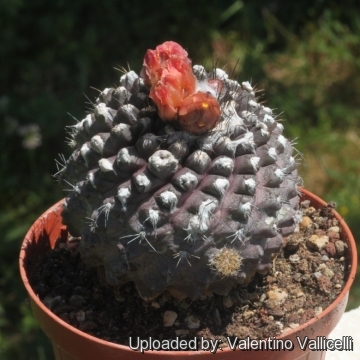 Copiapoa tenuissima (Copiapoa humilis subs. tenuissima) Photo by: Valentino Vallicelli
Copiapoa tenuissima (Copiapoa humilis subs. tenuissima) Photo by: Valentino Vallicelli Copiapoa tenuissima (Copiapoa humilis subs. tenuissima) Photo by: Diego Armentano
Copiapoa tenuissima (Copiapoa humilis subs. tenuissima) Photo by: Diego Armentano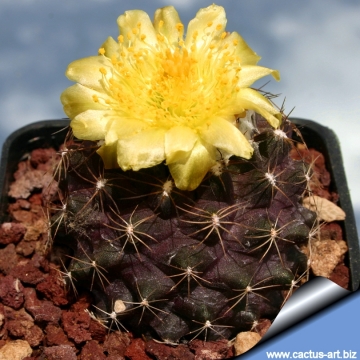 Copiapoa tenuissima (Copiapoa humilis subs. tenuissima) Photo by: Cactus Art
Copiapoa tenuissima (Copiapoa humilis subs. tenuissima) Photo by: Cactus Art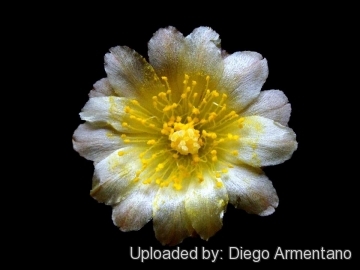 Copiapoa tenuissima (Copiapoa humilis subs. tenuissima) Photo by: Diego Armentano
Copiapoa tenuissima (Copiapoa humilis subs. tenuissima) Photo by: Diego Armentano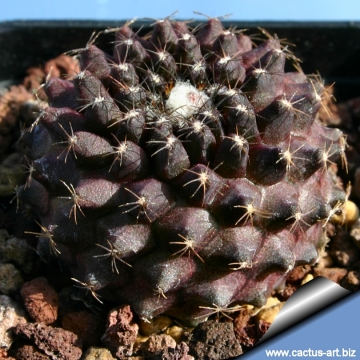 Copiapoa tenuissima (Copiapoa humilis subs. tenuissima) Photo by: Cactus Art
Copiapoa tenuissima (Copiapoa humilis subs. tenuissima) Photo by: Cactus Art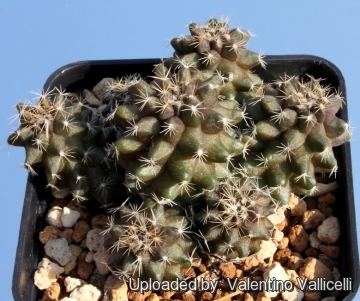 Copiapoa tenuissima (Copiapoa humilis subs. tenuissima) Photo by: Valentino Vallicelli
Copiapoa tenuissima (Copiapoa humilis subs. tenuissima) Photo by: Valentino Vallicelli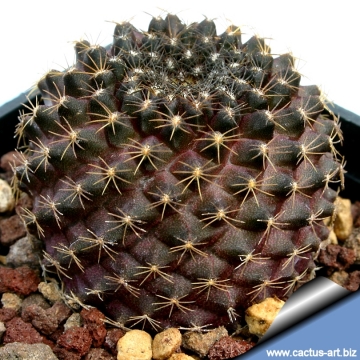 Copiapoa tenuissima (Copiapoa humilis subs. tenuissima) Photo by: Cactus Art
Copiapoa tenuissima (Copiapoa humilis subs. tenuissima) Photo by: Cactus Art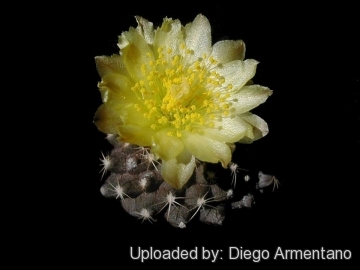 Copiapoa tenuissima (Copiapoa humilis subs. tenuissima) Photo by: Diego Armentano
Copiapoa tenuissima (Copiapoa humilis subs. tenuissima) Photo by: Diego ArmentanoCultivation and Propagation: It is not too difficult in a greenhouse, although grows quite slowly. It is usually seen as a grafted plant but can grow on its own roots too.
Soil: Use a mineral well permeable soil with little organic matter (peat, humus).
Exposure: They need a good amount of light shade to full sun this help to keep the plants healthy, although slow growth.
Watering: Water sparingly from March till October (weekly during summertime, if the weather is sunny enough), with a little fertilizer added. Less or no water during cold winter months, or when night temperatures remain below 10° to prevent root loss. It is sensitive to overwatering (rot prone).
Fertilization: Feeding may not be necessary at all if the compost is fresh then, feed in summer only if the plant hasn't been repotted recently. Do not feed the plants from September onwards as this can cause lush growth which can be fatal during the darker cold months.
Hardiness: Keep perfectly dry in winter at temperatures from 5 to 15 degrees centigrade. (but it is relatively cold resistant and hardy to -5° C, or possibly colder for short periods) In the rest period no high atmospheric humidity!! (Temperature Zone: USDA 9-11)
Uses: It is an excellent plant for container growing. It always looks good and stays small. It look fine in a cold greenhouse and frame or outdoor in a rockery.
Pests & diseases: It may be attractive to a variety of insects, but plants in good condition should be nearly pest-free, particularly if they are grown in a mineral potting-mix, with good exposure and ventilation. Nonetheless, there are several pests to watch for:
- Red spiders: Red spiders may be effectively rubbed up by watering the infested plants from above.
- Mealy bugs: Mealy bugs occasionally develop aerial into the new growth among the wool with disfiguring results, but the worst types develop underground on the roots and are invisible except by their effects.
- Scales: Scales are rarely a problem. It is wise to treat your whole collection with a systemic insecticide twice a year in spring and autumn.
- Rot: Rot is only a minor problem with cacti if the plants are watered and “aired” correctly. If they are not, fungicides won't help all that much. To prevent rottenness it is also advisable to surround its root neck by very rough sand or grit, this help a fast water drainage.
Propagation: Seeds (or offsets if available), Grafting is often used to speed growth rate and to create a back-up to plants in collection. Seeds germinate in 7-14 days at 21-27° C in spring, remove gradually the glass cover as soon the plants will be well rooted (ca 1-2 weeks) and keep ventilated, no full sun for young plants! Cuttings will take root in a minimum temperature of 20° C (but better in hot weather). Cuttings of healthy shoots can be taken in the spring and summer. Cut the stem with a sharp, sterile knife, leave the cutting in a warm, dry place for a week or weeks (depending on how thick the cutting is) until a callus forms over the wound. Once the callus forms, the cutting may be inserted in a container filled with firmed cactus potting mix topped with a surface layer of coarse grit. They should be placed in the coarse grit only; this prevents the cut end from becoming too wet and allows the roots to penetrate the rich compost underneath. The cuttings should root in 2 to 6 weeks.


















